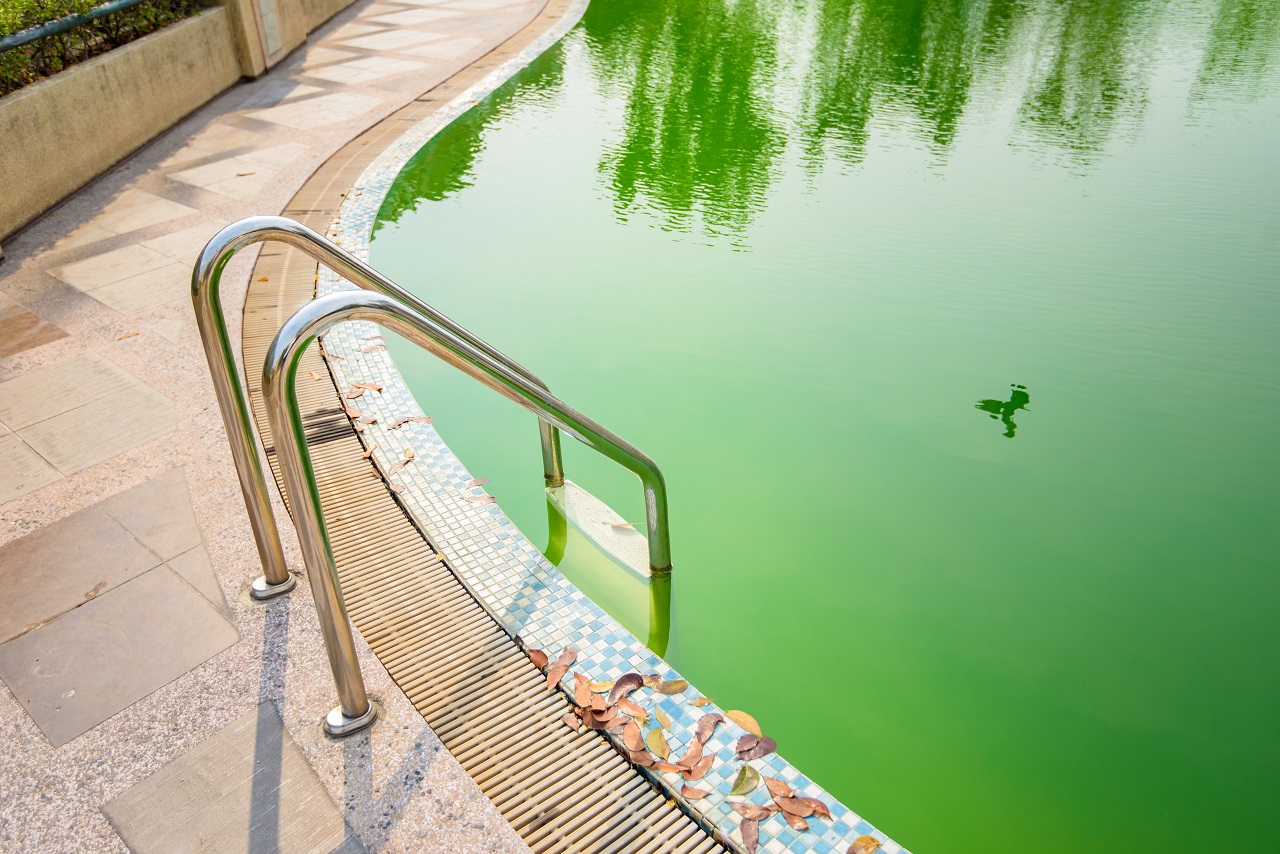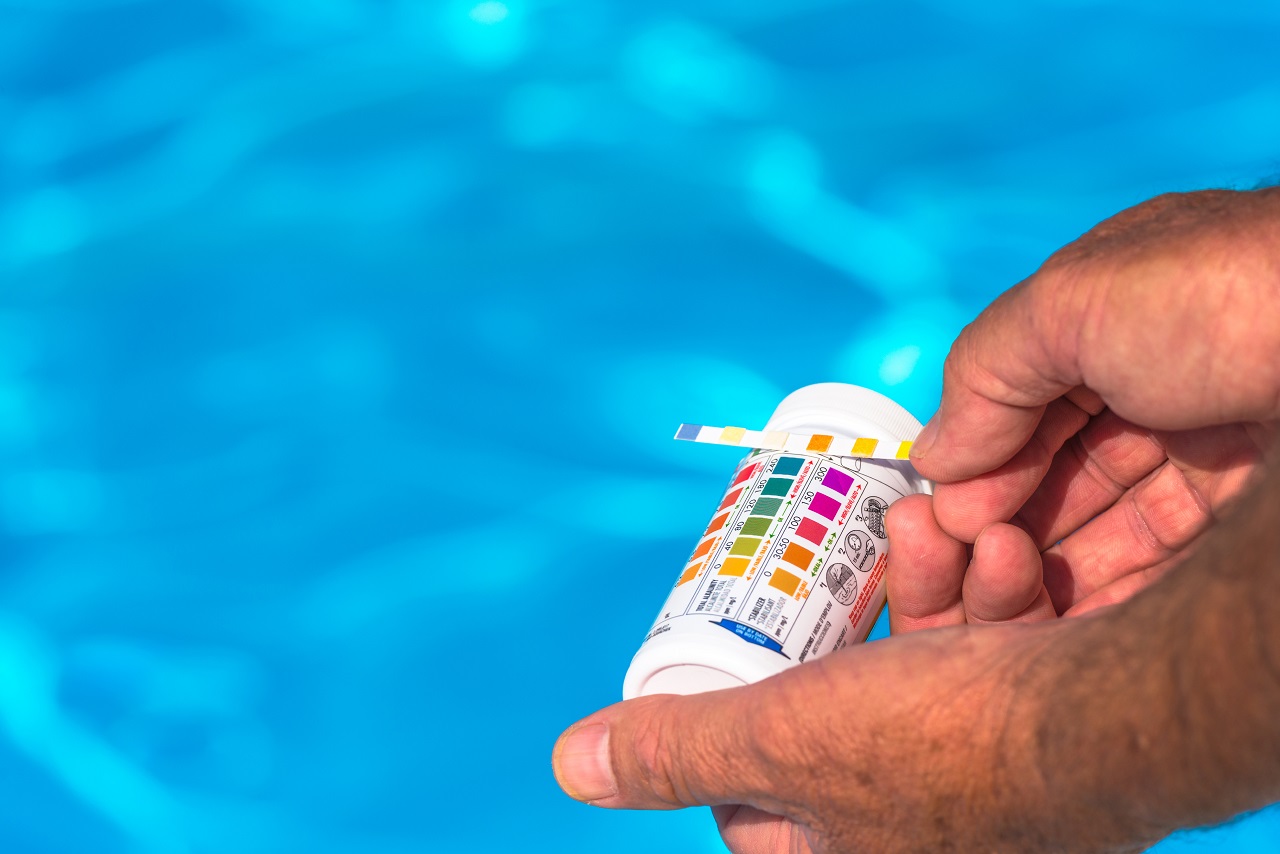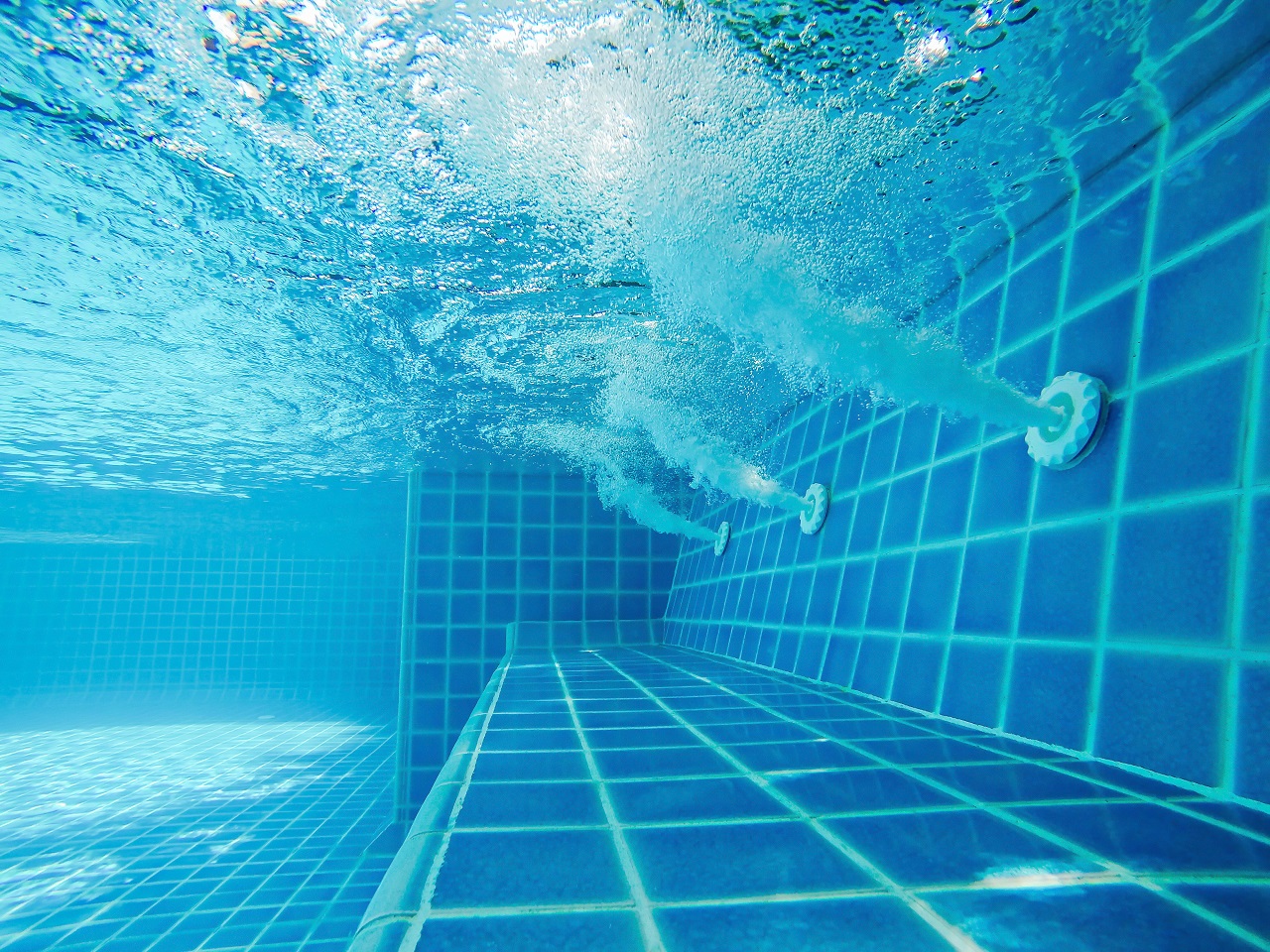One of the most frustrating things for pool owners is seeing the water inside that precious investment, whether an upscale in-ground swimming pool or a more restrained above-ground pool, turning green.
First thing’s first, then, why does pool water turn green in the first place?
Well, typically, this is triggered by algae overgrowth. The reasons causing this overgrowth of algae vary, and include:
- Incorrect pH balance: pH levels in your pool are critical. If the pH level is too low, this can cause eye irritation, and it can also erode the materials of your swimming pool. Even worse, when pH levels in the pool water are too high, the algae and bacteria won’t be killed, and you could end up experiencing skin irritation. When pH levels are out of kilter in either direction, this can lead to discolored pool water
- Weather change: Algae flourishes when the conditions are warm and humid. If you have recently been experiencing a warm spell, stay fully on top of cleaning your swimming pool
- Clogged filter: If your pool filter isn’t working efficiently, this will mean you pool water is unlikely to stay clean. Algae will thrive, and you also run the risk of encouraging bacteria and debris that will lead to your pool water turning green
I. How to Easily Clear Green Water in Your Swimming Pool
Now for the main event and restoring your pool water to its former glory.
Fortunately, you can accomplish this with the following simple steps:
- Determine how badly discolored the pool water appears
- It’s time to test the pH levels in your pool
- Use some pool shock
- Pump and filter the water to restore balance
- Add some flocculent
1) Determine how badly discolored the pool water appears
You first need to establish that your pool water is not so green that it needs draining and acid washing rather than shocking. In the worst scenario, pool water can become almost black. In this case, it will be your most cost-effective and least time-intensive method of making your water clean and clear again.
To determine whether the pool can be treated chemically or needs completely draining, take a look at the water. If you can see anywhere from 6 to 8 inches below the surface of the pool water, you have a strong chance of treating your water chemically to restore balance.
Assuming you don’t need to drain your pool, it’s time to test the pool pH levels next.
2) It’s time to test the pH levels in your pool
In order to check your pool water’s chemistry, you’ll need a pool testing kit.
Now, if your swimming pool water is green, you can be confident that the chlorine level is likely far too low. You can save yourself the hassle of testing this element.
Instead, you’ll be looking to dial in the pool pH levels. For pool water, pH levels of 7.5 are what you should typically aim for. When you’re looking to address green pool water, though, you should shoot for pH levels below 7.2.
Once you have tested levels and you know what you’re working with, you can lower the pH levels in the water with a sodium bisulfate product. You should follow the instructions on the package closely, add the product to your pool water, and then test the water levels again a few hours later.
Start by using a light touch, using perhaps three-quarters of the recommended amount of product. You can always add more if required, but this will depend on how acidic your pool water has become.
Next, it’s time for some shock treatment!
3) Use some pool shock
If you have the pool water pH levels down below 7.2, you’re ready to shock the pool water with some calcium hypochlorite.
You can find the best pool shock in large 25-pound containers for maximum economy. This will save you a great deal of money over time compared to buying the small one-pound bags of shock you’ll find in pool stores or chain stores.
If you’re using granular shock, use 5 pounds of this. For liquid chlorine, you’ll need 10 gallons.
Make sure the filter pump is running. Broadcast your chlorine across the water, making sure you cover the entire surface of the pool.
Once the water has been circulating for a few hours, consider adding an algaecide.
4) Pump and filter the water to restore balance
You must pump and filter your water again to help restore balance in the water. The method for this will depend on the type of pool filter you have installed.
If you have a sand filter or a DE (diatomaceous earth) filter, you’ll first need to backwash this. Backwashing the filter simply means cleaning it. To do this:
- Turn off the pump and unfurl the backwash hose
- Check the waste line for closed valves
- Switch off the multiport valve handle so you can backwash
- Turn the pump on and watch the water start flowing out of the hose
- Backwash the filter until the water runs completely clear. This should take 2 or 3 minutes
- Turn the pump off and turn the valve back to its original position
- Turn the filter on
When the water has been circulating for 24 hours with the new chemicals added, you’ll notice a startling transformation. The pool water should no longer be green.
The issue now is that the water will be cloudy, so you’ll need plenty of filtration and brushing over the following days to address this.
Maybe you have waited 24 hours and you find your pool water is still green. Don’t panic. This indicates that there could be too much of the wrong chemicals in the water. There could be too much stabilizer – cyanuric acid – or there could be too much phosphate. It can take some time for this cloudiness to dissipate, so pack plenty of patience.
If you have a sand filter in your pool, this process can take a week or more.
With cartridge filters, you’ll need to clean them twice a day for a couple of days, or until the pool water is clear.
Perhaps you’ve followed all these steps and yet your pool water remains cloudy. This suggests the filter could be clogged so look into repair or maintenance.
5) Add some flocculent
There is another great way to combat cloudy water in your pool. These tiny particles are resistant to pool chemicals, and they likely pass through filtration media due to their microscopic size.
When you add a pool flocculent, this helps to ensure the debris all clumps together, allowing you to easily vacuum it from the bottom of the pool.
II. Ongoing Pool Maintenance to Prevent Green Water
Ideally, if you maintain your pool properly, you can prevent debris and algae from accumulating in the first place.
So, once you have your pool water crystal clear again, it’s time to double some on some essential pool maintenance moving forward.
- Regularly check your pumps and filters: Be aware that algae thrives when the water is stagnant. By ensuring that your pool pump and filter are in peak condition, you’ll more efficiently keep the water moving and any organisms should be neatly skimmed off
- Vacuum and brush your pool weekly: Scrub the pool surfaces weekly and then vacuum the bottom of the pool. This should prevent any dead bacteria or algae from growing
- Regulate pH levels: Test the pH levels in your pool water 2 or 3 times a week. You should also check chlorine levels. If you have clear pool water, you should be aiming for pH levels between 7.4 and 7.6. Keep the water in this band and algae spots should be driven away before they have time to thrive and flourish
- Cover your pool: Using a swimming pool cover should stop most debris and microorganisms from tumbling into your pool water in the first place
III. Conclusion
Well, if you arrived here today at Wild River Country without any idea how to fix green pool water, that should no longer be the case.
By following the simple steps above, you should find you’re able to regulate pH levels and drive away the debris and algae that’s turned the water green. Be patient while you drive away the cloudiness in the aftermath of this project, and then start enjoying crystal clear water in your swimming pool again.
Arguably more importantly, you should make certain to stay on top of proper pool maintenance using our pointers above. Prevention is the best cure, and there’s no reason you can’t prevent your pool water from turning green in the first place.
Take a moment to bookmark our blog and make sure to pop back soon for guidance on all things pool-related.



